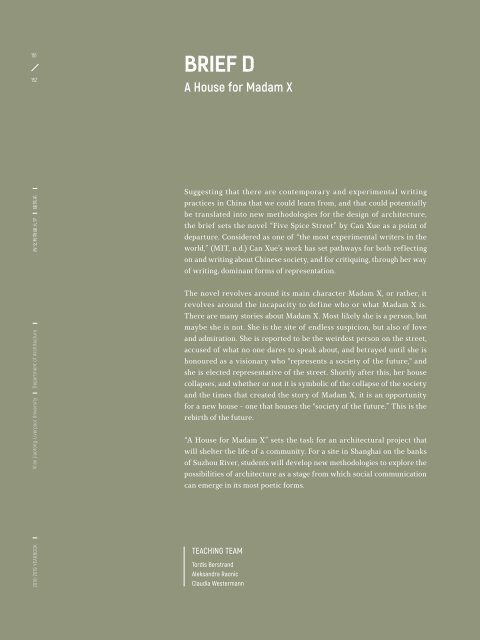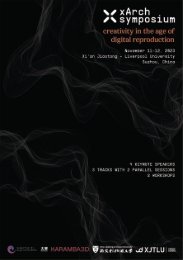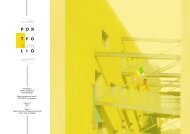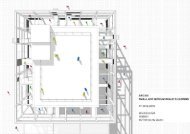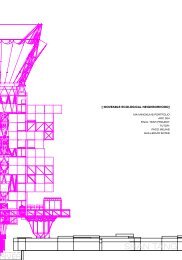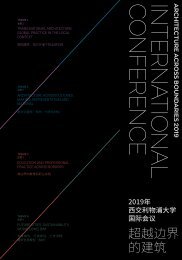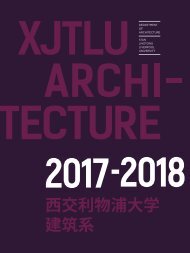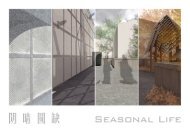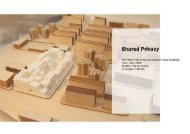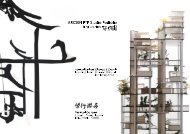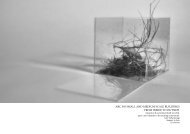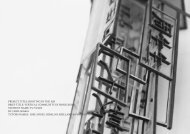YEARBOOK 2018 - 2019 | XJTLU DEPARTMENT OF ARCHITECTURE
The sixth edition of the yearbook of the Department of Architecture at Xi'an Jiaotong-Liverpool University presents student works created during the academic year 2018 - 2019. The yearbook exemplifies the new model for Chinese architectural education for which the department was commended by the Royal Institute of British Architects (RIBA). It is also a showcase of the creative culture that has guided our students towards successful international careers as responsible and creative architectural designers. The Department of Architecture at XJTLU offers RIBA Part 1, 2 and 3.
The sixth edition of the yearbook of the Department of Architecture at Xi'an Jiaotong-Liverpool University presents student works created during the academic year 2018 - 2019. The yearbook exemplifies the new model for Chinese architectural education for which the department was commended by the Royal Institute of British Architects (RIBA). It is also a showcase of the creative culture that has guided our students towards successful international careers as responsible and creative architectural designers. The Department of Architecture at XJTLU offers RIBA Part 1, 2 and 3.
Create successful ePaper yourself
Turn your PDF publications into a flip-book with our unique Google optimized e-Paper software.
151<br />
152<br />
BRIEF D<br />
A House for Madam X<br />
<strong>2018</strong>-<strong>2019</strong> <strong>YEARBOOK</strong> Xi’an Jiaotong-Liverpool University Department of Architecture 西 交 利 物 浦 大 学 建 筑 系<br />
Suggesting that there are contemporary and experimental writing<br />
practices in China that we could learn from, and that could potentially<br />
be translated into new methodologies for the design of architecture,<br />
the brief sets the novel “Five Spice Street” by Can Xue as a point of<br />
departure. Considered as one of “the most experimental writers in the<br />
world,” (MIT, n.d.) Can Xue’s work has set pathways for both reflecting<br />
on and writing about Chinese society, and for critiquing, through her way<br />
of writing, dominant forms of representation.<br />
The novel revolves around its main character Madam X, or rather, it<br />
revolves around the incapacity to define who or what Madam X is.<br />
There are many stories about Madam X. Most likely she is a person, but<br />
maybe she is not. She is the site of endless suspicion, but also of love<br />
and admiration. She is reported to be the weirdest person on the street,<br />
accused of what no one dares to speak about, and betrayed until she is<br />
honoured as a visionary who "represents a society of the future," and<br />
she is elected representative of the street. Shortly after this, her house<br />
collapses, and whether or not it is symbolic of the collapse of the society<br />
and the times that created the story of Madam X, it is an opportunity<br />
for a new house - one that houses the "society of the future.” This is the<br />
rebirth of the future.<br />
“A House for Madam X” sets the task for an architectural project that<br />
will shelter the life of a community. For a site in Shanghai on the banks<br />
of Suzhou River, students will develop new methodologies to explore the<br />
possibilities of architecture as a stage from which social communication<br />
can emerge in its most poetic forms.<br />
TEACHING TEAM<br />
Tordis Berstrand<br />
Aleksandra Raonic<br />
Claudia Westermann<br />
WUNDERKAMMER<br />
Cui Qichen | 崔 琦 琛


